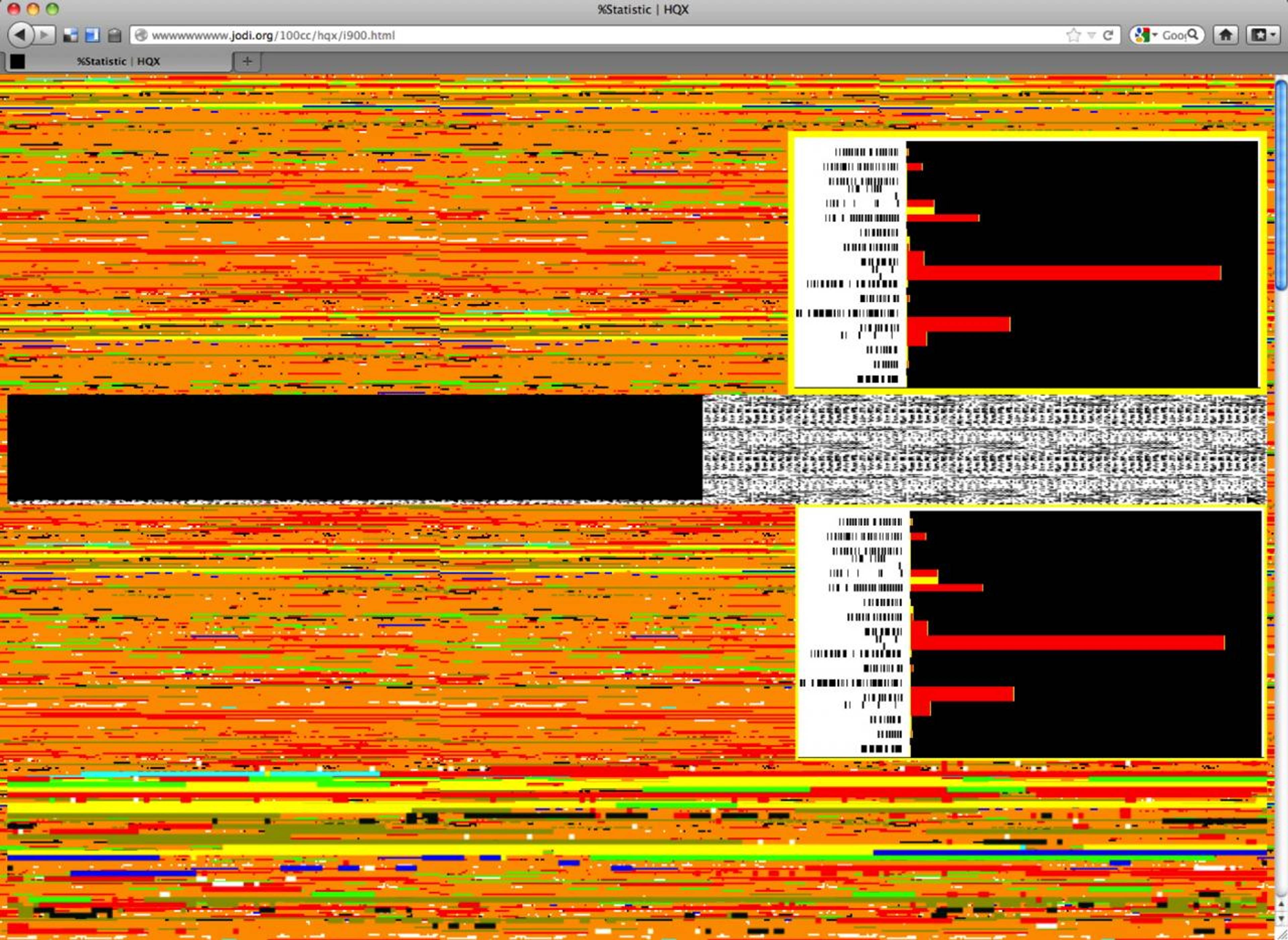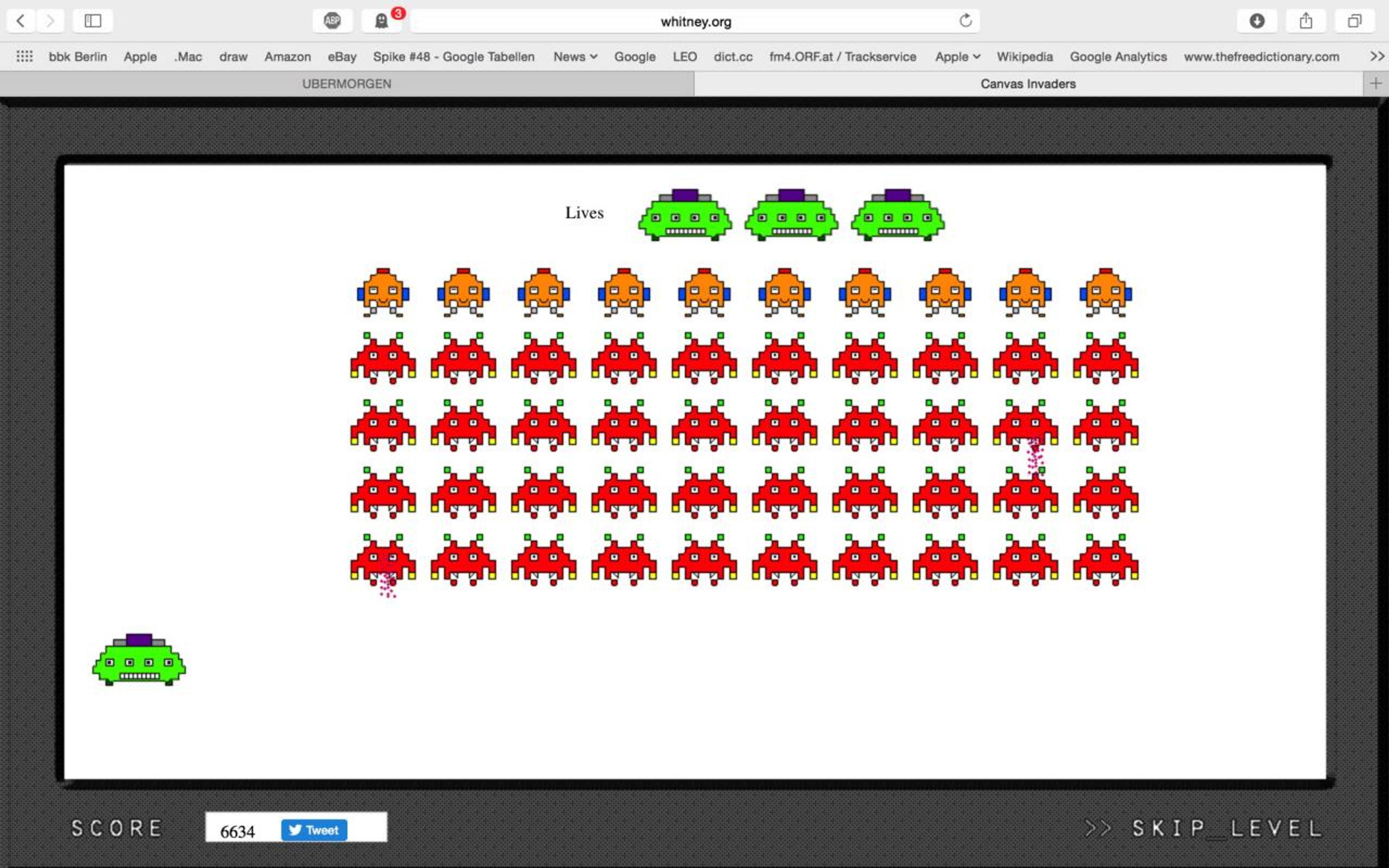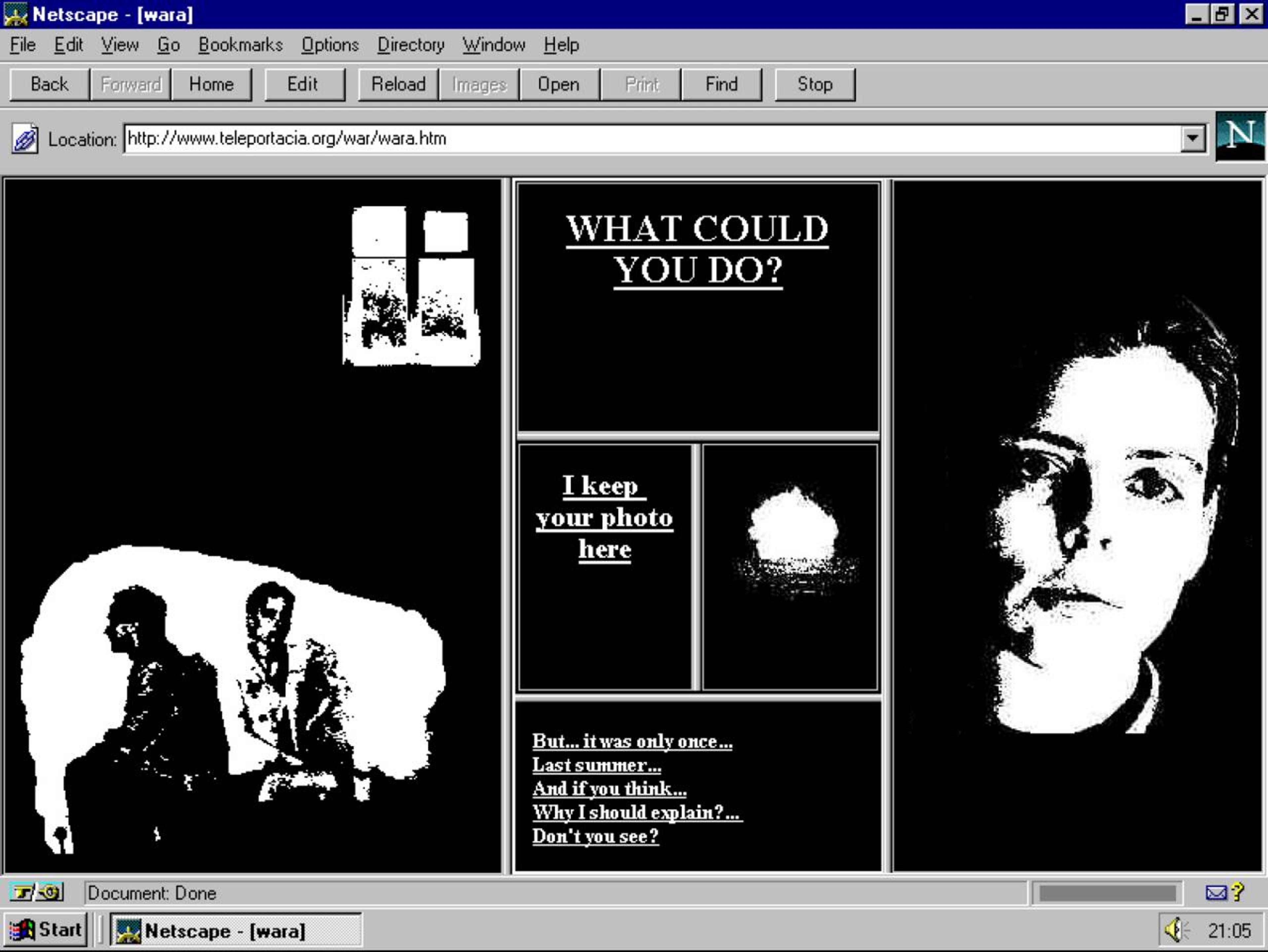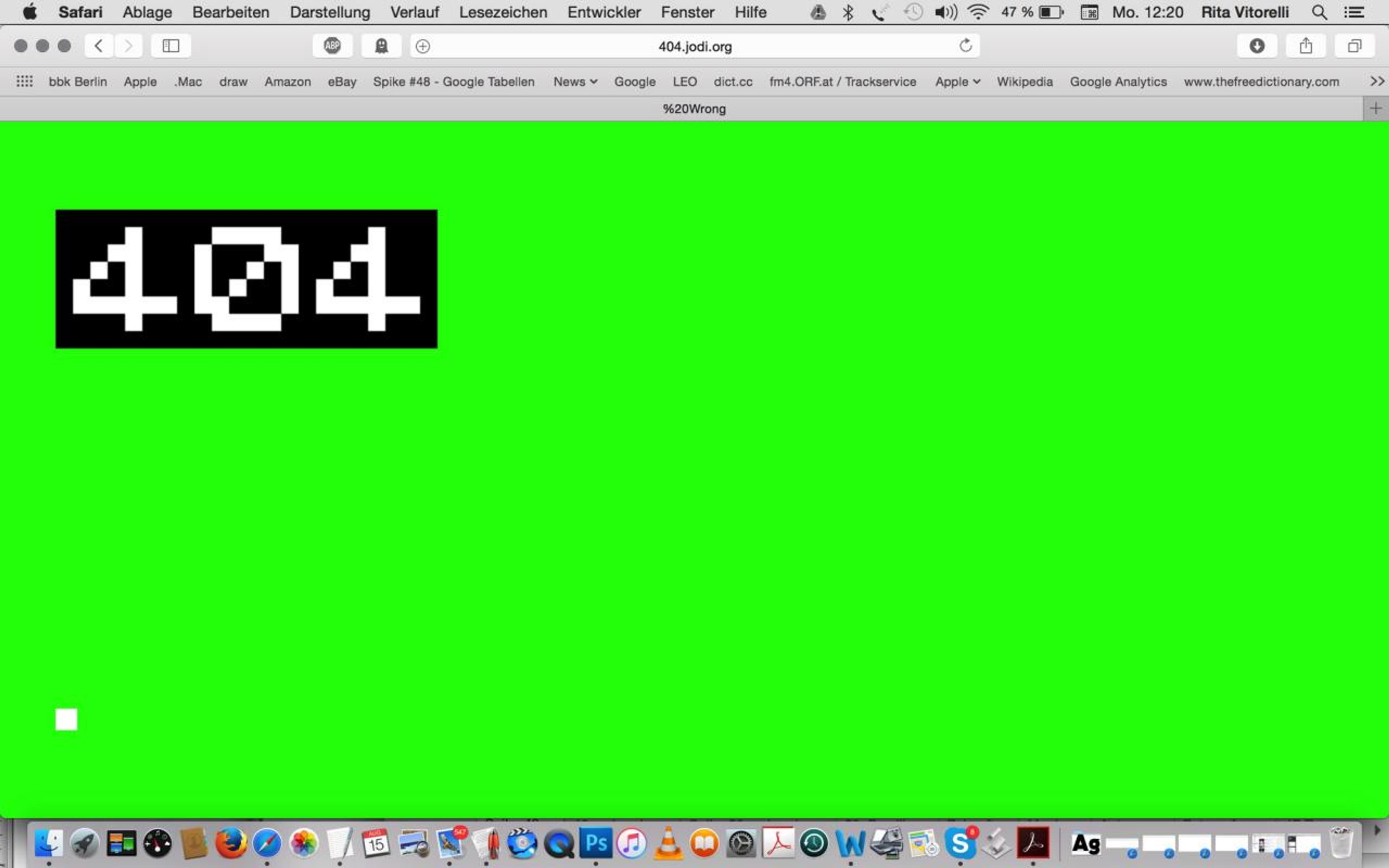The importance of net.art will never be adequately addressed while the history of art is written by the museums, galleries and the market. Many artists affiliated with this 1990s art movement deliberately used the Internet to circumvent the machinery of the art world or made works that are difficult if not impossible to exhibit and sell. But net.art still offers an essential critique of our relationship to the Internet as well as a compelling demonstration of how art can challenge it from within. Recognising that the dust has not yet settled, curator and critic Domenico Quaranta composed four short hypotheses about net.art built around the Introduction to net.art (1994–1999) by artists Natalie Bookchin and Alexei Shulgin in 1999.
In a shared online document, four artists and artist groups who helped shape the course of net.art – UBERMORGEN, JODI, Vuk Cosic, and Olia Lialina – respond with their own take on what happened.
Domenico Quaranta : It’s 2016. After a few years of mainstream art world caution, a book is out from MIT Press about artists reacting to the “mass medium” of the Internet, some big institutions have had their say about the digital revolution, post-Internet has become old news, and an association of galleries has published a manifesto on the future of the art market in which they say that, soon, “talk of digitalization will be a thing of the past.” Nobody seems to remember a time, not so long ago, when an artist’s decision to be on the Internet meant leaving the art world behind, forgetting about institutional frameworks and market values, merging art and life, playing with identities and roles, creating horizontal communities, and submitting their work to large audiences who may not recognise its status as art. [ Olia Lialina : Let me add here that the opposite was also true: the Internet was also a ticket to the art world.] The story of this moment has been told many times, but it’s still hard to define its place in History, the one with the capital H. [ Vuk Cosic : This is St. Perec and it should be written in French because it is much better, avec sa grande hache .] This short feature won’t change things, of course: it’s just a modest attempt to put the spotlight on a few topics that defined the first wave of Internet-based art; to understand its position in recent art history; and to outline what its legacy is and what of it remains in an environment that has completely changed.
Desktop IS , 1997 Online exhibition of users' desktops Curated by Alexei Shulgin
COMMUNITY AND INDIVIDUAL
The practical death of the author […]
Specific features of net.art
1. Formation of communities of artists across nations and disciplines
2. Investment without material interest
3. Collaboration without consideration of appropriation of ideas […]
— Bookchin / Shulgin
Domenico Quaranta : net.art was born as a discussion thread on mailing lists, mostly Nettime : an art and activism mailing list set up by Geert Lovink, Pit Schultz, and Nils Röller that launched in autumn 1995. The first Nettime meetings, including the one organised at the 1995 Venice Biennale, created an IRL social context that enabled people interested in the artistic and communicative potential of the Internet to discuss their practices. As a disembodied environment in which the artist was a name, a nickname or a domain name, and the artwork was a (potentially dispersed) list of files and strings of bits, the Internet initially favoured depersonalisation and anonymity over authorship and self-promotion, as well as community over individualism. As a place without gatekeepers or the validating power of institutions, it prompted artists to develop platforms, networks, directories and community projects in order to contextualize their efforts within a broader practice. JODI’s Map (1995) was a subverted corporate diagram showing the connections between various net.art and activist websites, but there are many more examples of the importance of community in early net.art: Alexei Shulgin created a lot of collaborative projects, from Refresh (1996; a chain of different artists’ web pages connected via automatic refresh) to Desktop IS (1997–98; a collection of desktops from people associated with net.art) or Form Art Competition (1997, a selection of aesthetic experiments with web forms); or Olia Lialina’s Teleportacia (1997), the first online gallery for net.art, and Heath Bunting’s Irational , a community and a server for artists launched in 1996; as well as Vuk Cosic’s and 0100101110101101.ORG’s remixes of other net.artists’ works.
UBERMORGEN : We have come to understand net.art as a true avant-garde movement, spearheading and inventing and developing most ideas that were later commercially used in digital fine art but also the Internet economy as a whole. We would also like to add two more works by the group etoy to the list: the etoy.TANKS-SYSTEM (1994–1997), a digital infrastructure consisting of tanks (content) and pipelines (transportation) designed as an absurd and redundant metaphor based on how hyperlinks enable you to jump from site to site without travelling through physical space; and the digital hijack (1996), for which we manipulated search-engine entries to kidnap early Internet users and bring them to our dark entertainment platform. Also worth mentioning is lizvlx’s and Andrea Mayr’s website 194, a Faustian (e) mail art manipulation system with a denunciation component and a highly user-unfriendly environment (IP-address based, user data as currency). All three works are examples of nonhierarchical network thinking among a group mainly consisting of Eastern European artists (Vienna included).
Olia Lialina : I think it was a very special moment in history when to be an artist was to be a curator, a system administrator, an art critic, an archivist or a vandal of your own work. But net artists were not the only ones to experience it. Actually everyone who was making their first web pages at the time was diving into an ocean of unknown, unexpected occupations, that in so many cases would change a person’s life completely.
JODI : Go_FUww XX1QqYR9elves- AelARTiRAtes#Ar t rat racesr s. be=4nnti/NATi aa.itn/re:______ wwwwww www.jodi.org * reg.8aug1995 WHOIS jodi.orgCOmeonView_ ToplessLL--SOURCe Tools%20Web_Developer%20Page_ Source <html><title> %Location | http:// wwwwww www.jodi.org </title> <BODY BGCOLOR=”#000000” TEXT=”#00ff00” LINK=”#00ff00” V L I N K = ” # 0 0 f f 0 0 ” ALINK=”#ffffff”> <font size=5> <CENTER><blink><b> <A HREF=”100cc/index.html”>
Vuk Cosic : I agree with JODI here. Net.art was the last avant-garde of the twentieth century, and it made incisive contributions to history even as it had an inevitable naiveté – you either felt the burn or you didn’t. We all knew we were putting two important words (internet and art) together (Pit Schultz coined the word net.art). All of us had already had brushes with the art system and loved the opportunity to work outside that space. For me creating works was as important as organising the mailing lists and events. The historic avant-garde movements with their virus of freedom were big sources of inspiration, but so was the ugly destiny of the hyper-appropriated grunge movement. (Remember that? When these people in squirrel-hunting shirts were playing good college music but got mainstreamed at the speed of light, killing the art and the artists in the process …). So there was an imperative to innovate and to obfuscate. It was an adrenaline rush to be the first to run in the snow, while being observed by snipers behind you.
NOT FRAMED AS ART
0% Compromise
a. By maintaining independence from institutional bureaucracies
b. By working without marginalization and achieving substantial audience, communication, dialogue and fun
– Bookchin / Shulgin
Domenico Quaranta : As an art practice taking place in a public space and using means that could not yet be easily recognised as artistic, early net.art had – and made extensive use of – a potential that was rarely experienced by other radical art forms in the twentieth century: that of being confronted with a broader, general public who encountered what they made not necessarily as art, but just as something meaningful or meaningless that was happening out there. Avoiding the art label allowed JODI to become a legend of the net, researched and discussed by Internet users in weird, gushing YouTube videos, and to gather a lot of unprofessional art criticism. It also allowed projects like UBERMORGEN’s Vote-Auction website (where votes in the 2000 US presidential election were for sale) to be “taken seriously” as events rather than as performance, to be discussed in the public arena and to reach millions of people through newspapers and television.
UBERMORGEN : It was even more extreme for us in the 1990s. The goal was never to be artists but rather punk/drug/techno explorers finding completely new worlds and seeing and feeling things that nobody had felt and done before. LSD and the Internet were a very potent combination for that.
Vuk Cosic : An educated friend explained this to me in 1995 as a clear case of non-signifying context. The ambition to crush your (new Netscape 2) browser with blinking gifs or copying entire sites were tactics to influence your experience of being online. You could say we were deliberately mismanaging expectations. And you are right to say that the object of inquiry was the world and not the beautiful or the sublime. When you see our twenty-year-old pieces today, you have a feeling like reading Apollinaire or listening to the Sex Pistols: you can surely follow but without the context it’s just a fragment.
UBERMORGEN Clickistan , 2010
ALL IN ONE
All in One:
a. Internet as a medium for production, publication, distribution, promotion, dialogue, consumption and critique
b. Disintegration and mutation of artist, curator, pen-pal, audience, gallery, theorist, art collector, and museum.
— Bookchin / Shulgin
Domenico Quaranta : Compared with the traditional art world, with its theories and definitions of art, its social distinctions between different professional roles and its material distinction between contexts of production, exhibition, discussion and critique, the early web appeared as a wild place where a single person or a single platform could play out different roles. When there is no distinction between a personal homepage, a museum and a magazine, a single website can be all these things. Where you are what you claim to be, you can be whatever you want just by changing your name or description. You can define your set of criteria and run your own art prize. You can be an artist and a gallery owner, an artist and a curator, an artist and a collector. You can buy a domain and run your own Whitney Biennial. You can change your name and write criticism on your own works.
UBERMORGEN : This was indeed one of the strongest aspects: we were free to form our own identity, to act anonymously and to freely appropriate anything we wanted to. This led to a level of freedom and agency that was unique and subversive at the same time.
Olia Lialina : Looking back, I feel like it was not can , but must : you had to change roles, change names, register new domains, move from server to server, rethink and reconceptualise your “page”.
Vuk Cosic : It was a game of continuously exchanging subversive synesthetic ideas with the only five people alive that understood them. Both in terms of making and of the social life of your work. (Hey, I really miss Alexei [Shulgin] and Heath [Bunting] in this text-space, also Rachel [Baker] and Josephine [Bosma] and Pit [Schultz] and Geert [Lovink]: how come we don’t talk about friendships?) Lots of work was about the technology itself, but really soon – in the course of the first afternoon really – it was also about identity, society, politics and other non-decorative topics that we were hotly debating on Nettime, inhabited by the very sharp minds of writers, journalists, activists and general thinkers. It is actually crucial not to divorce the history of net.art from the Nettime mailing list.
JODI : !!!Include NETTIME-L ARCHIVE URL !!! ;) ==>: 0000;)) https://nettime.org/Lists-Archives/nettime-l-9510/threads.html
Olia Lialina My Boyfriend Came Back from the War, online since 1996
TEMPORARY AUTONOMY
TAZ (temporary autonomous zone) of the late 90s: Anarchy and spontaneity
— Bookchin / Shulgin
Domenico Quaranta : As “the ultimate modernism”, net.art knew to come after postmodernism. It knew that its autonomy could only be temporary, limited in space and time. Like all radical art movements in the twentieth century, soon it would have had to choose between integration and disappearance into the subcultural underground. This awareness brought it to play with its own historification and institutionalisation, and to claim its own death when the real process of institutional recognition started around 1999.
UBERMORGEN : That was the time we were in San Francisco, hanging out with drugged out hippie-tech-billionaires with dedicated fibre-optic links to their house-boats. For the Eastern European mind, the Californian ideology was air bubbles with enclosed turbocapitalism DNA. We just laughed about it, but today we are not laughing anymore. Corporate dominance was setting the tone in all industries and it was only a matter of time before the Internet would be raided by black knights and cowboys because the strength of the protocol (TCP/IP) is its weakness at the same time, as with TOR (onion routing) today. It is no accident that both systems were developed by US military agencies, so physically and philosophically they are secure and vulnerable simultaneously.
Olia Lialina : This talk about death of net.art … I didn’t like it 1999 and don’t like it now. It functions to exclude dozens of artists who continued to work as net artists through the darkest times, who were not affiliated with net.art or had never heard of it.
JODI 404.jodi.org, 1998
Vuk Cosic : I was the history buff of the group and am guilty of few of the sins you mention. The thinking was that we should give ourselves the name and create the pantheon and in general be much much faster than the mainstream (yes, we were also reading Paul Virilio). Our only chance to experience freedom as we felt it was in being quicker to understand and quicker to act and quicker to leave (much like with the TAZ). Net.art was a timehighway based thing, much more a life experience than a factory of online products (as the recent “ Electronic Superhighway ” show at the Whitechapel in London somehow implied). The declaration of death resonated so much because it was our passionate refusal of the art system as we saw it. It marked the end of the Heroic Period. Heath Bunting once said about Nettime that it stopped being a community and became an audience, and we tried to interfere with that dynamic. It was no accident that we went to North America, home of the Californian Ideology and its start-up derivatives, to announce the death of net.art. Heath, Alexei and I made the declaration at an impromptu press conference in Banff in the spring of 1998. It was as easy as that.
JODI : WWW.we DIDand/DO_NOT_ LOOSE.neverWINS.com@ALlways -.. ORG/@..Xe=-$n.et.HTML 9(Google.G.&SPry.net.is1100%Boringtemp. BULL.SEA-->>Ne.ARt has_the Emo&MindPOWWWer=- FOREVER//WRONG=STRONG /EERRR >>>????? HTTP:?/HEr#So-ryhiSTorryNOtance:/~ zzz9oogle.SPy ry.ITcom0.0.0.0----- Net.Art1.1.1.1.1
Vuk Cosic Psycho
VUK COSIC (born 1966 in Belgrade) is an artist, curator, and cofounder of the mailing lists Syndicate and 7-11 and the Ljubljana Digital Media Lab. For Documenta Done (1997) he copied the official website of Documenta X and declared it a readymade. In the early 90s he worked on ASCII art, using software he programmed himself to translate famous pictures and film sequences into numbers, letters and punctuation marks. Cosic lives in Ljubljana.
JODI (or jodi.org ) was founded in 1994 by Joan Heemskerk (born 1969 in Kaatsheuvel, NL) and Dirk Paesmans (born 1965 in Brussels). They were among the first artists to use the browser as an artistic tool, for example on wwwwww www.jodi.org (1995), where seemingly meaningless text is revealed in the source code as ASCII drawings of a nuclear missile. They often create artworks that disrupt the smooth functioning of the net and challenge its conventions, and have also produced video game modifications and software art. They live in Dordrecht, NL.
OLIA LIALINA (born 1971 in Moscow) entered the net art canon with her online piece My Boyfriend Came Back From The War (1996). In the narrative, based on interactive hypertext distributed across various frames, a couple get closer to each other again after a long time apart. Lialina is a professor for new media at the Merz Akademie in Stuttgart. This autumn she is collaborating with the American artist Cory Arcangel for an exhibition at Western Front in Toronto and The Kitchen in New York.
DOMENICO QUARANTA (born 1978 in Brescia, Italy) is a writer, critic and curator. He is a cofounder of the curatorial platform Link Center for the Arts of the Information Age and author of Beyond New Media Art (2013), In Your Computer (2011), Media, New Media, Postmedia (2010) and Net Art 1995 – 2005 (2004). He lives in Brescia.
UBERMORGEN are the artists lizvlx (born 1973 in Linz, Austria) and Hans Bernhard (born 1971 in New Haven, USA). The collaborative duo, founded in 1995, gained notoriety for media-hacking actions such as Vote-Auction (2000), an online auction platform on which American citizens could sell their votes in that year’s presidential election. In Google Will Eat Itself (2005) the group placed advertisements on many websites using Google’s AdSense program to amass profits through fake clicks, which they in turn invested directly in Google shares so that they would own the entire company in 202,345,117 years. They live in Vienna and St. Moritz.








